Clothing in ancient Greece primarily consisted of the chiton, peplos, himation, and chlamys. While no clothes have survived from this period, descriptions exist in contemporary accounts and artistic depictions. Clothes were mainly homemade, and often served many purposes (such as bedding). Despite popular imagination and media depictions of all-white clothing, elaborate design and bright colors were favored.
History and types
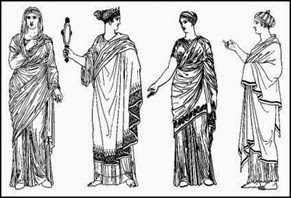 Ancient Greek clothing consisted of lengths of linen or wool fabric, which generally was rectangular. Clothes were secured with ornamental clasps or pins (περόνη, perónē; cf. fibula), and a belt, sash, or girdle (zone) might secure the waist.
Ancient Greek clothing consisted of lengths of linen or wool fabric, which generally was rectangular. Clothes were secured with ornamental clasps or pins (περόνη, perónē; cf. fibula), and a belt, sash, or girdle (zone) might secure the waist.
Men's robes went down to their knees, whereas women's went down to their ankles.
Peplos, Chitons
The inner tunic was a peplos or chiton. The peplos was a garment worn by women. It was usually a heavier woollen garment, more distinctively Greek, with its shoulder clasps. The upper part of the peplos was folded down to the waist to form an apoptygma. The chiton was a simple tunic garment of lighter linen, worn by both genders and all ages. Men's chitons hung to the knees, whereas women's chitons fell to their ankles. Often the chiton is shown as pleated. Either garment could be pulled up under the belt to blouse the fabric: kolpos.
Strophion, Epiblema, Veil
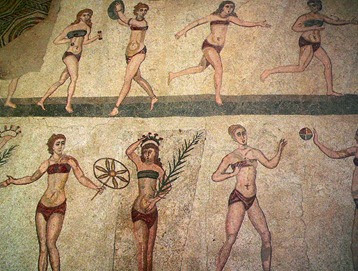 A strophion was an undergarment sometimes worn by women around the mid-portion of the body, and a shawl (epiblema) could be draped over the tunic. Women dressed similarly in most areas of ancient Greece although in some regions, they also wore a loose veil as well at public events and market.
A strophion was an undergarment sometimes worn by women around the mid-portion of the body, and a shawl (epiblema) could be draped over the tunic. Women dressed similarly in most areas of ancient Greece although in some regions, they also wore a loose veil as well at public events and market.Chlamys
The chlamys was made from a seamless rectangle of woolen material worn by men as a cloak. It was about the size of a blanket, usually bordered. The chlamys was typical Greek military attire from the 5th to the 3rd century BC. As worn by soldiers, it could be wrapped around the arm and used as a light shield in combat.
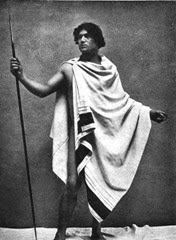
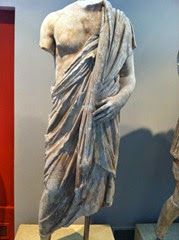 Himation
HimationHimation
The basic outer garment during winter was the himation, a larger cloak worn over the peplos or chlamys. The himation has been most influential perhaps on later fashion.
Nudity and athletics
During Classical times in Greece, male nudity received a religious sanction following profound changes in the culture. After that time, male athletes participated in ritualized athletic competitions such as the classical version of the ancient Olympic Games, in the nude as women became barred from the competition except as the owners of racing chariots. Their ancient events were discontinued, one of which (a footrace for women) had been the sole original competition. Myths relate that after this prohibition, a woman was discovered to have won the competition while wearing the clothing of a man—instituting the policy of nudity among the competitors that prevented such embarrassment again.



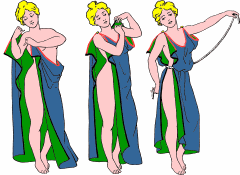
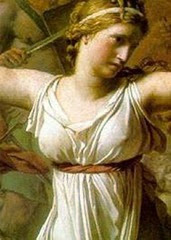
EmoticonEmoticon